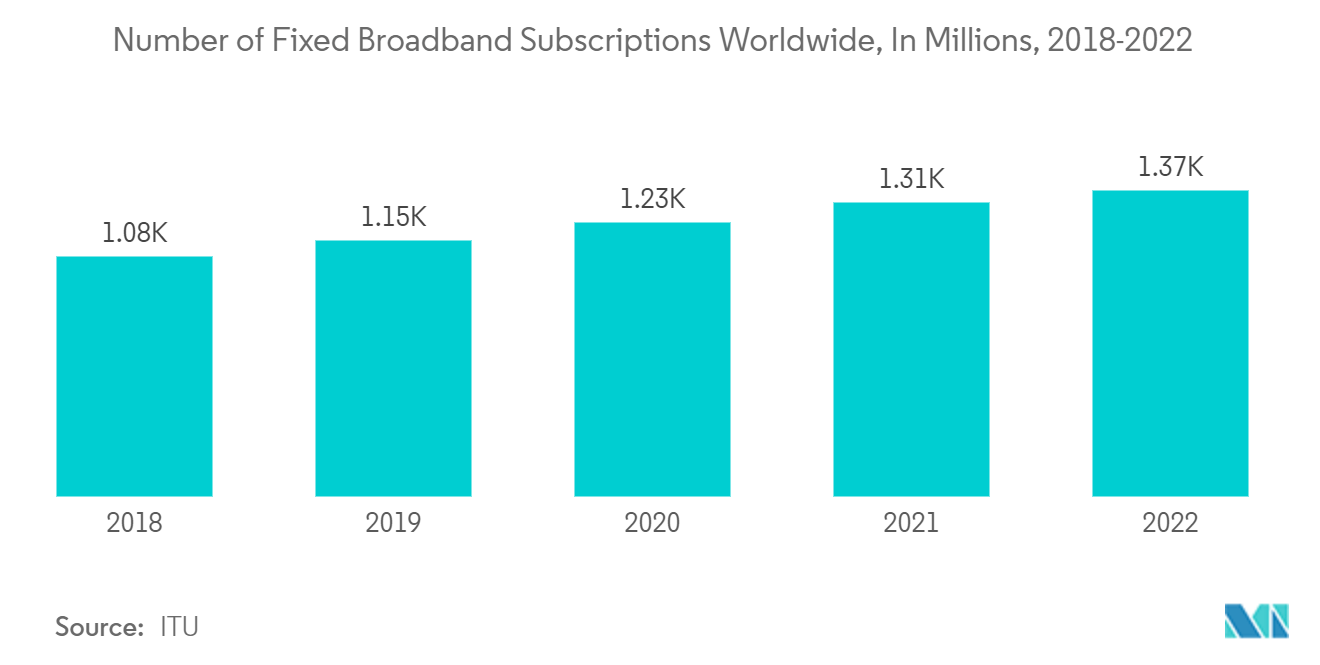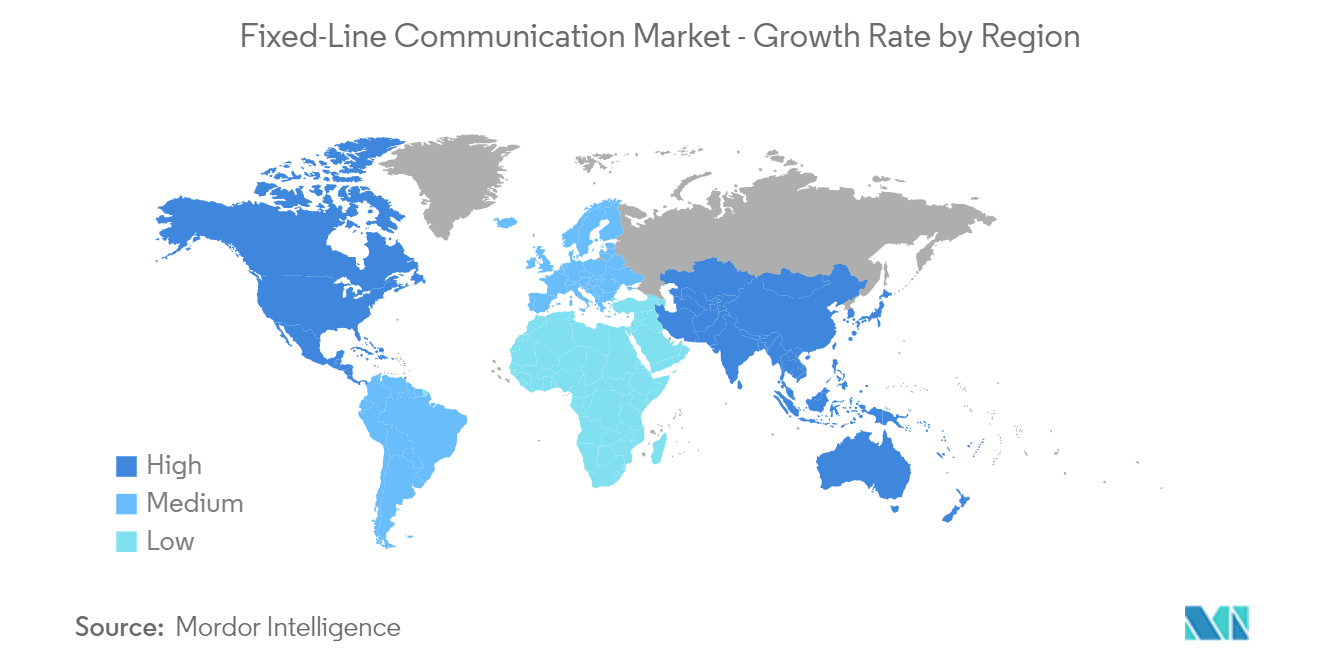Market Trends of Fixed-Line Communications Industry
This section covers the major market trends shaping the Fixed-Line Communications Market according to our research experts:
Growth of Fiber Optic Cable is Expected to Stimulate the Market Growth
- Fiber optic cables and devices are utilized in a variety of industries, including not only telecom and community access television (CATV) but also networks in the military and aerospace, energy utilities, municipal, campus, and other sectors. Fiber optic networks, designed to generate and transfer data using light signals, are the primary technical approach for high-speed communications around the globe.
- Fiber-based fixed broadband services remain the households and businesses' most adopted Internet services. In the leading markets, most of the fixed-line network has been replaced by fiber-optic cables to benefit from the optical fiber's far better performance than twisted-copper networks.
- The proliferation of the internet and the subsequent roll-out of services, such as video-on-demand, led to increased bandwidth demand, which fueled the adoption of fiber optics, a more enhanced communication medium. Governments' investments and the establishment of NBNs offering fiber on a wholesale basis, as well as investments by operators, have been and will be crucial for the widespread availability and adoption of fiber broadband services.
- Fixed-broadband deployment subscription continues to grow yearly, with growing importance on fiber infrastructure. The residential sector is one of the largest consumers of fixed-line services. A large and ever-increasing number of users connect to the internet via residential broadband networks.
- According to the International Telecommunication Union (ITU) survey, there were around 1.3 billion fixed broadband subscriptions worldwide, with a slight increase from 1.2 billion over the last year, which strives for the demand for fiber optic cable.q

Asia-Pacific is Expected to Dominate the Fixed-line Communications Market
- Asia-Pacific is witnessing an increase in the construction of data centers. The increasing adoption of data centers in the region is boosting the demand for router products because of digital transformation through new technologies, and the number of internet users has increased dramatically. Despite the rapid increase in smartphone users, fixed-line Internet connections remain popular among users. Thus, this has a positive impact on the fixed-line communications market.
- The adoption of the router is expanding due to the broadband penetrations, such as mobile-based internet access, network-based businesses, competitive business environments, and cloud-based service adoption, which may positively impact the market studied. Also, the adoption of STBs and optic cables for broadband services increased in the region owing to the need for demand of the Media and Entertainment segment to watch Movies, Live telecasts, Series, and social media platforms.
- Rising demand for high-speed internet services and competitively priced fiber broadband plans from operators would promote fixed broadband service adoption in the region. Benefits such as unlimited internet access and access to crucial subscription video-on-demand (SVoD) platforms would boost the adoption of fixed-line broadband service.
- In India, for example, BSNL's Superstar Premium Plans provide unlimited 150 Mbps broadband connection for INR 999 (US$12) per month and access to OTT platforms such as Disney + Hot Star. Premium, SonyLIV Premium, and Voot Select. Similarly, Telecom giants like Jio and Airtel have launched unlimited plans with all access to over-the-top (OTT) platforms and with a 5G capacity in smart cities.
- In recent years, according to the International Telecommunication Union (ITU), China accounts for the largest broadband subscriber base in the region and accounts for about 80% of all fixed-broadband subscriptions at speeds over 10 Mbps. In countries like China and India, the government has taken the initiative to focus on high-definition pictures by converting normal channels to HD channels which led to the growth of the set-top box market in the region.


